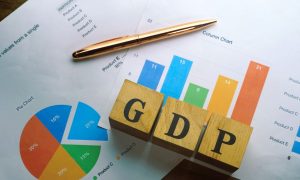Customer emotions drive every purchase decision your business faces. Understanding how customers feel about your brand is no longer just nice to have. It’s become a critical component of business success. Companies that master emotional measurement and management see 23% higher customer loyalty rates and 18% increased revenue compared to those that focus solely on traditional metrics. This article outlines the key principles for accurately measuring customer emotions.
Importance of Measuring Customer Emotion
Emotions influence 95% of purchasing decisions, according to Harvard Business School research. Yet most businesses still rely on outdated satisfaction surveys that barely scratch the surface of how customers feel.
Reflect on your most recent disappointing restaurant experience. The food might have been decent, but poor service left you frustrated. Traditional surveys would capture your meal rating, but they’d miss the emotional rollercoaster that determines whether you’ll return or recommend the place to friends.
Customer emotions create lasting impressions that shape brand loyalty. Satisfied customers spend 140% more than dissatisfied ones, but emotionally connected customers spend 300% more. The difference isn’t just mathematical – it’s emotional.
Measuring emotions helps you identify pain points before they become problems. When you understand emotional triggers, you can predict customer behavior with remarkable accuracy. Companies using emotional analytics report 25% better customer retention rates and 19% higher profits.
The business case becomes even stronger when you consider the impact of word-of-mouth marketing. Emotionally engaged customers generate 3x more referrals than satisfied but emotionally neutral customers. Their enthusiasm becomes your best marketing tool.
Tools and Techniques for Measuring Emotion

Modern technology provides sophisticated methods for capturing emotional data that were previously impossible just five years ago. Natural language processing tools analyze customer feedback in real-time, identifying emotional patterns across thousands of interactions.
Sentiment analysis software examines social media posts, reviews, and support tickets to gauge emotional responses. These AI-driven insights reveal not just what customers say but how they feel when they say it. Advanced analytics can detect sarcasm, frustration, and excitement with impressive accuracy.
Conversational analytics take this further by analyzing voice patterns during phone calls. The software can identify stress levels, satisfaction indicators, and emotional intensity without customers being aware that they’re being monitored. This approach provides unfiltered emotional data that surveys often miss.
Biometric measurement represents the cutting edge of emotion tracking. Heart rate monitors, facial recognition software, and neural imaging devices provide objective data on emotional states during customer interactions. While expensive, these tools offer unparalleled insights into subconscious emotional responses.
Survey design has evolved beyond simple satisfaction ratings. Modern questionnaires use emotional mapping techniques that capture nuanced feelings throughout the customer journey. Instead of asking, “How satisfied were you?” companies now ask, “How did you feel when…” to get richer emotional data.
Real-time feedback collection through mobile apps and website widgets captures emotions as they occur. This immediate data proves more accurate than delayed surveys where emotions have cooled or changed.
Strategies for Managing Customer Emotion
Managing customer emotions requires proactive strategies that address feelings before they become problems. Successful companies create emotional blueprints that map the typical feelings of customers at each touchpoint.
Personalization based on emotional profiles creates deeper connections. When you know a customer tends toward anxiety during purchase decisions, you can provide extra reassurance and support. Confident customers often prefer streamlined and efficient interactions.
Response protocols for different emotional states ensure consistent management across all touchpoints. Frustrated customers need immediate acknowledgment and solutions. Excited customers benefit from enthusiasm matching their energy level. Confused customers require patient explanation and guidance.
Environmental design has a significant influence on emotions that most businesses may not realize. Colors, lighting, music, and layout all trigger emotional responses. Retail stores often use warm colors to create a sense of comfort, while tech companies tend to favor cool tones to convey innovation and reliability.
Recovery strategies turn negative emotions into positive outcomes. When things go wrong, how you handle the situation determines future loyalty. Customers who experience excellent problem resolution often become more loyal than those who have never encountered problems.
Incorporating Emotional Insights into Customer Journeys
Customer journey mapping transforms when you add emotional layers. Traditional journey maps show what customers do, but emotional journey maps reveal how they feel at each step.
Touchpoint optimization focuses on moments of the highest emotional impact. Research indicates that customers recall peak emotional moments and final impressions most vividly. Smart companies invest heavily in optimizing these critical emotional touchpoints.
Emotional flow design ensures smooth transitions between different feeling states. Jarring emotional shifts create negative experiences even when individual touchpoints work well. Successful journeys maintain emotional continuity that feels natural and comfortable.
Predictive emotional modeling helps anticipate customer feelings before they occur. By analyzing historical, emotional data, you can predict when customers might feel frustrated, excited, or confused. This foresight enables proactive intervention.
Cross-channel emotional consistency ensures that customers feel the same way about your brand, regardless of the interaction method. Your website, phone support, and in-store experience should evoke similar emotional responses that reinforce your brand identity.
Advanced Training in Customer Experience Management
Emotional intelligence training transforms how employees interact with customers. Traditional customer service training focuses on processes and procedures. Emotional intelligence training teaches individuals to recognize and respond to emotional cues.
Role-playing exercises using real emotional scenarios prepare staff for challenging situations. Practicing with angry, confused, or anxious customers builds confidence and competence. Video analysis of customer interactions reveals emotional subtleties that might otherwise go unnoticed.
Cultural sensitivity training becomes crucial as businesses expand globally. Emotional expressions vary significantly across cultures. What signals satisfaction in one culture might indicate confusion in another. Understanding these differences prevents misinterpretation of customer emotions.
Leadership development includes emotional competency as a core skill. Managers who understand emotions create better team environments and make more informed decisions. Their emotional awareness cascades down through the organization.
Common Pitfalls in Customer Experience Programs
Surveys capture conscious thoughts but often overlook subconscious emotional responses that influence behavior. Balanced measurement approaches combine multiple data sources to provide a comprehensive picture.
Ignoring negative emotions represents a dangerous mistake. Companies often focus on creating positive emotions while neglecting situations that generate negative feelings. Addressing pain points proves more valuable than amplifying already positive experiences.
Generic emotional responses fail to resonate with diverse customer bases. One-size-fits-all emotional strategies ignore personality differences, cultural backgrounds, and individual preferences. Segmentation based on emotional profiles creates more effective approaches.
Inconsistent emotional experiences across touchpoints confuse customers and weaken brand identity. When your website feels friendly but your phone support seems cold, customers receive mixed emotional messages that undermine trust.
Challenges in Emotion Management
Privacy concerns limit the collection of emotional data in many industries. Customers are increasingly concerned about how companies utilize their personal emotional information. Transparent policies and opt-in approaches build trust while gathering valuable insights.
Technology limitations affect the accuracy of emotional measurement. Current tools excel at detecting obvious emotions but struggle with subtle or mixed feelings. Human interpretation remains necessary for nuanced emotional analysis.
Cost considerations prevent many companies from implementing comprehensive emotional measurement systems. Advanced tools require significant investment in technology and training. However, the ROI often justifies initial expenses through improved customer retention and increased spending.
Staff resistance to emotional approaches can sabotage implementation efforts. Employees comfortable with traditional metrics may resist emotional measurement and management techniques. Effective change management is crucial for successful adoption.
Overcoming Barriers to Implementation

Start small with pilot programs that demonstrate emotional measurement value. Select high-impact touchpoints where emotional improvements yield noticeable benefits. Success stories from pilot programs build organizational support for broader implementation.
Integration with existing systems reduces the complexity of implementation. Rather than replacing current measurement tools, add emotional layers to existing processes. This approach minimizes disruption while maximizing adoption rates.
Executive sponsorship ensures that adequate resources and organizational commitment are in place. When leadership champions emotional initiatives, employees take them seriously. Executive involvement also provides necessary budget authority for comprehensive programs.
Conclusion
Measuring and managing customer emotion isn’t optional anymore – it’s essential for business survival. Companies that master emotional intelligence create stronger customer relationships, higher loyalty rates, and better financial performance.
The rules are straightforward: measure emotions accurately, respond appropriately, and maintain consistency across all touchpoints. Technology provides powerful tools, but human understanding remains the foundation of emotional success.
Start implementing these strategies today. Your customers are already making emotional decisions about your brand. The question isn’t whether emotions matter – it’s whether you’ll measure and manage them effectively.
ALSO READ: Why is the Voice of the Customer Important
FAQs
Sentiment analysis software, conversational analytics, and real-time feedback systems provide the most comprehensive emotional insights for most businesses.
Continuous measurement is most effective, with formal analysis conducted monthly or quarterly, depending on the business’s size and the frequency of customer interactions.
Companies typically see 15-25% improvements in customer retention and 10-20% increases in customer lifetime value within the first year.
Address negative emotions immediately with empathy, specific solutions, and follow-up to ensure resolution. Use negative feedback as an opportunity for improvement.
Yes, through simple survey modifications, social media monitoring, and staff training in emotional recognition. Start small and expand gradually.




